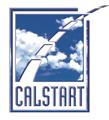Nationwide tech supplier industry ready to support more efficient trucks and buses, offer U.S. competitive advantage
New report shows American heavy-duty truck suppliers, nation benefit from strong efficiency and emissions rules
August 11, 2016
Pasadena, CA – American companies that develop and manufacture high-efficiency, low-carbon technologies for big trucks, buses and other large vehicles make up a widespread economic sector that is poised for growth – and ready to meet upcoming new national standards for fuel efficiency in medium- and heavy-duty vehicles. That’s according to U.S. Heavy-Duty Vehicle High Efficiency Technology Suppliers, a new white paper from the clean transportation industry group CALSTART.
In the first-ever attempt to gauge the scope of the United States’ high-efficiency technology supplier sector for heavy-duty trucks and buses, CALSTART conducted an initial scan of businesses and identified and mapped 255 companies. The firms range from vehicle manufacturers to component suppliers to technology developers, and operate from 535 facilities in 40 states, impacting 80 percent of the nation.
The white paper’s mapping function also shows clusters of activity. These include the heavy-duty manufacturing regions of the upper Midwest; technology hubs in California and along the Pacific Coast; technology innovators on the East Coast including Massachusetts, New York, and the Carolinas; and a corridor that runs through, Georgia, Alabama, Tennessee, Indiana and Ohio.
“This report showcases what we know from experience: the U.S. is a leader in transportation tech, including next-generation advanced engines,” said David Johnson, president and CEO of Achates Power, which develops advanced opposed-piston engines that greatly increase fuel efficiency, reduce greenhouse gas emissions and cut costs. “Our industry can meet aggressive efficiency targets at affordable prices. Strong standards will encourage continued investment and drive advanced tech innovation and jobs in this sector.”
Medium- and heavy-duty vehicles currently account for about 20 percent of GHG emissions and oil use in the U.S. transportation sector, but are only about 5 percent of the vehicles on the road. Just as there are miles-per-gallon and emissions requirements for passenger vehicles, there are national efficiency and carbon standards for medium- and heavy-duty trucks, buses, and vocational vehicles. An updated set of these standards, known as “Phase 2” and covering 2019-2027, is due out soon from the Environmental Protection Agency (EPA) and the National Highway Traffic Safety Administration (NHTSA).
“America has a rich, nation-wide network of high-efficiency suppliers developing and providing products for medium- and heavy-duty vehicles that can meet and exceed proposed standards,” said Bill Van Amburg, senior vice president of CALSTART and one of the white paper’s authors.
“This white paper just scratches the surface of that capability. High efficiency technologies and the companies making them represent an area of competitive advantage and jobs for the United States,” Van Amburg said. “And in a world where country after country is increasingly trying to save on fuel use, cut pollution and tackle climate change, efficient transportation technology can represent an export driver, as well.”
European companies have enjoyed a reputation for leading the pack when it comes to efficient trucks and buses. But as the CALSTART white paper discovered, North American vehicles are changing that trend partially due to fuel economy rules. American firms are developing and manufacturing a wide variety of advanced technologies, including many with export potential.
“The U.S. is in the midst of a complete reinvention of how we transport people and cargo and, as demonstrated by this report, the U.S. in general, and California specifically, is at the center of electric heavy-duty vehicle innovation to make this happen,” said Ryan Popple, president and CEO of Proterra, Inc., the maker of zero-emission, battery-electric buses. “Proterra is proud to be part of this movement and applauds other pioneering companies that are helping drive increased investment in this area of American technology leadership.”
“It’s clear that America has what it takes to grow this market,” said Joe Dalum, president and CEO of Odyne Systems, a leading manufacturer of hybrid systems for medium- and heavy-duty work trucks. “In addition to improving propulsion efficiency, our technology can completely eliminate idling at worksites, and that’s a breakthrough area for efficiency—using less fuel emits less carbon. Flexible rules that include technology like ours help businesses save money and significantly reduce emissions.”
Businesses that rely on large trucks and buses know that more efficient vehicles save money, and reduced fuel use is a fundamental driver for heavy-duty efficiency technologies. But as the report makes clear in a series of profiles, many companies in this sector support strong national standards because they help signal future technology needs, provide clear goals and reduce risk for making investments.
“Demand for efficient vehicles is growing, and advanced technologies like ours are answering those needs,” said Dr. Ed Lovelace, CTO of XL Hybrids, a pioneer in hybrid electric powertrain upfits designed for fleet vehicles. “Strong standards, intelligently applied to accommodate innovation, can create a level, market-driven playing field and help aftermarket technology companies like XL Hybrids grow while helping companies that depend on clean efficient fleet vehicles to slash their fuel costs.”
“Our Turbocharged Natural Gas® Dual Fuel Conversion Technology is an effective alternative fuel solution for existing heavy-duty trucks that displaces 50-60 percent of diesel fuel with lower carbon natural gas without the loss of any power and torque,” said Lyle Jensen, CEO of American Power Group, Inc. “Our low NOx results can also significantly help smog plagued regions meet their air quality objectives.”
The white paper and its interactive suppliers map are available online on the CALSTART website (www.calstart.org). The map and its listings are a living document, and CALSTART encourages high-efficiency suppliers to ensure they are listed by filling out the input form also found online.
